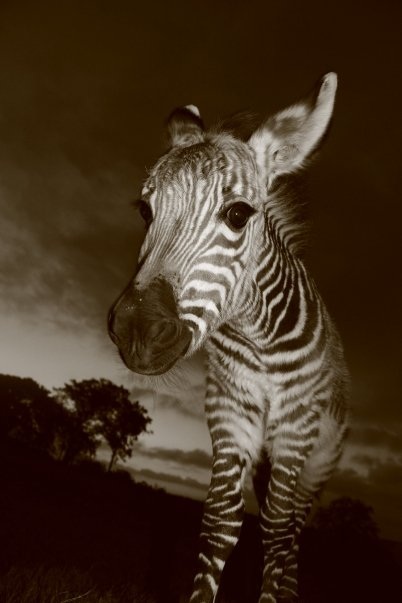Archive for African wildlife
Meet Alison Jones, iLCP Photographer of the Month
Posted in iLCP: Bringin Conservation Into Focus with tags Africa, African wildlife, alison jones, animal blog, animal blogs, Animal Rights, Animal Trafficking, animals blog, Anti Poaching, Biodiversity., Conservation, conservation photography, Culture, Current Events, Education, Endangered Species, Environment, Extinction, freshwater, freshwater resources, habitat loss, iLCP, illegal, Illegal Animal Trade, illegal hunting, Illegal Wildlife Trade, International League of Conservation Photographers, killing, Mara Conservancy, Nature, nature photography, News, Photography, poaching, stop poaching, water, wildlife, wildlife blog, wildlife blogs, wildlife conservation, wildlife conservation blog, wildlife photography on May 31, 2011 by ilcpcommunicationsPhoto of the Day
Posted in Photo of the Day with tags Africa, African lions, African wildlife, animal blog, animal blogs, animal photos, Animal Rights, Animals, animals blog, Biodiversity., Bush Warriors Photo of the Day, cat eye structure, Conservation, Education, Endangered Species, Environment, Extinction, Gorazd Golob, hunting behavior, Lions, mammalian eye structure, Nature, nature photography, night vision, photo contest, Photography, Photos, poaching, predator behavior, rods, stalking, tapetum lucidum, wildlife, wildlife blog, wildlife blogs, wildlife conservation, wildlife conservation blog, wildlife photography, wildlife photos on December 20, 2010 by Caroline Thompson
“The Night Stalker”
Photo credit: Gorazd Golob
The eyes of the lion are larger than comparable-sized animals. Their round pupils seek out prey across the savannah. Lions hunt primarily in the early evening, dawn, or at night with eyes that are well adapted for use in low light. Lions (and all cats) have a high concentration of sensitive cells in the eye, called ‘rods’, which increase their ability to see in the dark by absorbing as much light as possible. A structured layer of tissue at the back of the eye, called the ‘tapetum lucidum’, reflects the light back onto the retina, utilizing whatever small amount of light available and giving cats (and other animals) increased night vision. The tapetum lucidum also gives animals the reflective “glow” that you see when you shine a light on them in the dark.
Even on dark nights with no moon, lions see well enough to hunt. When prey is sighted, the lions will sink down into cover and begin to stalk. Hiding among the tall grass, the lions will freeze and remain motionless when necessary. Visual cues are used to communicate with other pride members in the hunt, such as a small flick of the tail or a rustle in the grass. They then charge their prey, usually within a distance of ten meters, as they cannot run fast for long distances.
Please click here to see ALL of our Photo of the Day winners and for more information on the Bush Warriors Photo of the Day Contest, including how to enter. Enjoy the beauty of nature, just as it was intended to be!
![]()
Video of the Day: The Revenge- Lion and Hyena Battle to Death
Posted in Video of the Day with tags Africa, African wildlife, animal blog, animal blogs, Animal Rights, Animals, Biodiversity., competition, Conservation, Education, Endangered Species, Environment, Extinction, hyenas, Lions, Nature, poaching, revenge, wildlife, wildlife blog, wildlife blogs, wildlife conservation, wildlife conservation blog on December 3, 2010 by Dori G
Excerpts from National Geographic’s “Misjudged Hyenas“:
“Behind the snarl lies a cagey opportunist, proficient hunter, and dutiful parent.”
“Hyenas have an undeserved reputation as thieves and scavengers that subsist on the leavings of the larger predator. ‘But it is far more frequent that the lion will steal a kill from the hyenas,’ says Kay Holekamp of Michigan State University. Biologists have known this for decades, she laments, yet hyenas are still viewed as ‘slobbering, mangy, stupid poachers’ (not to mention goose-stepping fascists) in The Lion King, the movie that for many has defined the species.”
“Why do people grimace at the sight of them? With their patchy fur and odd proportions, maybe they flout our shallow standards for beauty in animals. ‘Our obsession with looks doesn’t take into account how well their bodies and brains are adapted to an ecosystem,’ says Anup Shah, who, with his brother, Manoj, photographed hyenas in Kenya, their homeland, and Tanzania.”
“Snarling in the face of certain death, a hyena cornered by lions in a Masai Mara bog has nowhere to run. Male lions seem to relish harassing and killing their smaller competitors.”
To read this wonderful article in full, click here.
![]()
Photo of the Day
Posted in Photo of the Day with tags African wildlife, animal blog, animal blogs, animal photos, Animal Rights, animals blog, Biodiversity., Bush Warriors Photo of the Day, Conservation, Education, Endangered Species, Environment, Extinction, Nature, nature photography, Nick Turner, photo contest, Photography, Photos, poaching, wildlife, wildlife blog, wildlife blogs, wildlife conservation, wildlife conservation blog, wildlife photography, wildlife photos, Zebra, zebra photo, Zebras on November 26, 2010 by Caroline Thompson
“Zebralicious”
Photo credit: Nick Turner
Zebra foals are born with brown and white coloration, and develop the black and white coloring with age. For the first few days of their life, the mother will keep her foal away from the rest of the herd, until it learns her smell and voice. Zebra foals are able to run within an hour of birth!
These horse relatives might appear to have fat abdomens. In truth, it is bloating caused by the bacteria in their gut, which helps them to digest food. Fat is stored in the animals neck, which enables scientists to determine the health of the zebra quickly. Healthy animals will have a thick layer of fat around the neck, causing their mane of hair to stand upright.
Please click here to see ALL of our Photo of the Day winners and for more information on the Bush Warriors Photo of the Day Contest, including how to enter. Enjoy the beauty of nature, just as it was intended to be!
![]()






